A mass for asymptotically complex hyperbolic manifolds
A mass for asymptotically complex hyperbolic manifolds
A mass for asymptotically complex hyperbolic manifolds
You also want an ePaper? Increase the reach of your titles
YUMPU automatically turns print PDFs into web optimized ePapers that Google loves.
hal-00429306, version 1 - 2 Nov 2009<br />
4 A MASS FOR ASYMPTOTICALLY COMPLEX HYPERBOLIC MANIFOLDS.<br />
The spin assumption is classical : we need spinors to implement Witten’s techniques<br />
[Wit]. The additional topological assumption in the even dimensional case is quite<br />
technical but could be weakened ; we refer to the text <strong>for</strong> a more precise statement.<br />
This assumption was already used in [BH]. Basically, Witten’s techniques require some<br />
“special” spinors to exist on the model. Complex <strong>hyperbolic</strong> spaces of odd dimension<br />
possess such distinguished spinors, called Kählerian Killing spinors. Such spinors do<br />
not exist in the even dimensional case, so we need an extra trick. This has a cost : an<br />
additional assumption.<br />
Let us make a general remark. The previous positive <strong>mass</strong> theorems were very<br />
related to – if not completely immersed into – physical ideas. The <strong>asymptotically</strong><br />
<strong>complex</strong> <strong>hyperbolic</strong> realm does not share this feature (yet). We feel it is all the more<br />
interesting to observe that the very physical idea of a positive <strong>mass</strong> theorem carries over<br />
to purely mathematical settings. It might indicate that there is a general mechanism,<br />
waiting <strong>for</strong> new applications.<br />
The structure of the paper is as follows. In a first section, we will discuss the real<br />
<strong>hyperbolic</strong> case and explain how the introduction of a natural <strong>hyperbolic</strong> connection<br />
gives a slightly different proof of the <strong>hyperbolic</strong> positive <strong>mass</strong> theorem in [CH]. This<br />
case will also serve as a helpful guide <strong>for</strong> the <strong>complex</strong> case. In a second section, we<br />
will introduce the <strong>complex</strong> <strong>hyperbolic</strong> connection and describe its basic features and in<br />
particular how it interacts with the so-called Kählerian Killing spinors. A third section<br />
is devoted to the proof of the <strong>complex</strong> <strong>hyperbolic</strong> positive <strong>mass</strong> theorem in odd <strong>complex</strong><br />
dimensions. A short fourth section will describe how to extend these arguments to the<br />
even dimensions. Finally, an appendix describes an example.<br />
Acknowledgements. The authors would like to thank Marc Herzlich <strong>for</strong> bringing the<br />
problem to their attention, but also Olivier Biquard, Elisha Falbel and Paul Gauduchon<br />
<strong>for</strong> useful discussions.<br />
1. The real <strong>hyperbolic</strong> case.<br />
In this section, we briefly review some aspects of [CH]. The result mentioned here<br />
is not new, but we feel that the re<strong>for</strong>mulation we propose might be useful. It is indeed<br />
quite simple and turns out to generalize to the <strong>complex</strong> <strong>hyperbolic</strong> setting. The basic<br />
question we address is the following : given a Riemannian manifold that looks like the<br />
<strong>hyperbolic</strong> space, how can one ensure that it is actually the <strong>hyperbolic</strong> space ? The<br />
approach suggested here consists in finding a connection characterizing the <strong>hyperbolic</strong><br />
space, in that it is flat only on a (locally) <strong>hyperbolic</strong> manifold, and then try to build<br />
parallel sections <strong>for</strong> this connection.<br />
Let us start with a Riemannian manifold (Mn ,g). We consider the vector bundle<br />
E = T ∗M ⊕ R obtained as the sum of the cotangent bundle and of the trivial real line<br />
bundle. It can be endowed with a natural Lorentz metric h : <strong>for</strong> α ∈ T ∗ xM and u ∈ R,<br />
we set<br />
h(α,u) = |α| 2 g − u 2 .<br />
We will say that an element (α,u) of E is future light-like if h(α,u) = 0 and u > 0. We<br />
then define a connection ∇ RH on E : if (α,u) is a section of E and X a vector field on<br />
M,<br />
∇ RH<br />
X<br />
g<br />
α ∇<br />
:= Xα − ug(X,.)<br />
u dXu − α(X)<br />
This connection is metric with respect to h. Moreover, an easy computation shows<br />
that its curvature vanishes if and only if g has sectional curvature −1, which is why<br />
<br />
.


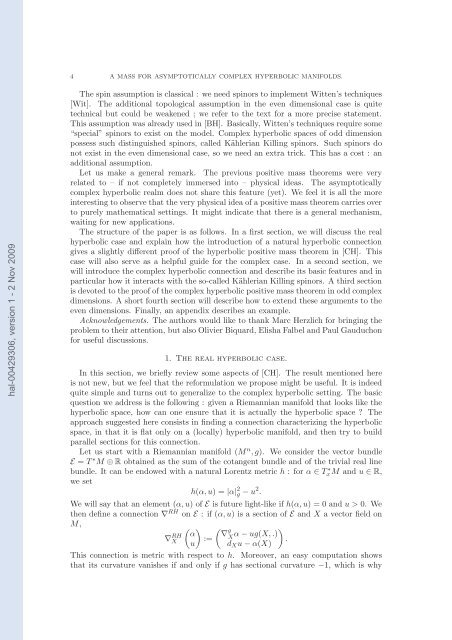

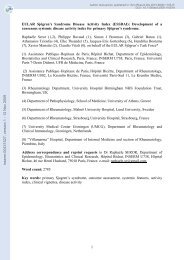
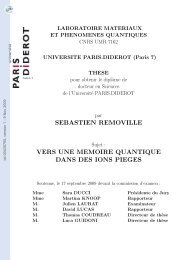
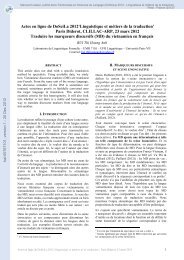
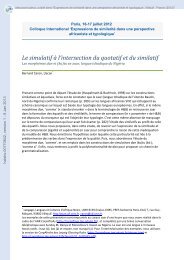
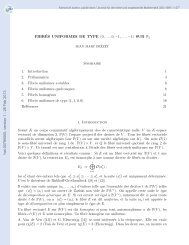
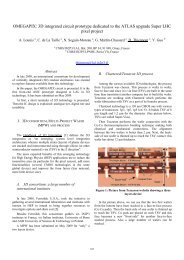
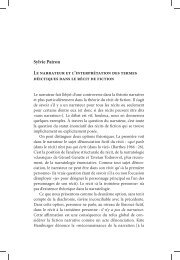
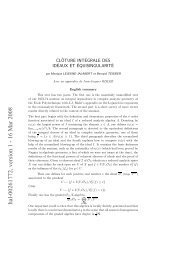
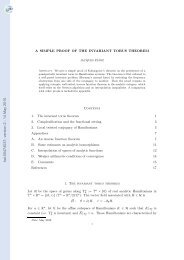

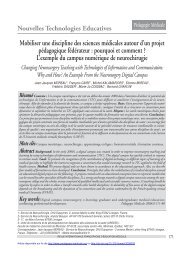

![[tel-00433556, v1] Relation entre Stress Oxydant et Homéostasie ...](https://img.yumpu.com/19233319/1/184x260/tel-00433556-v1-relation-entre-stress-oxydant-et-homeostasie-.jpg?quality=85)